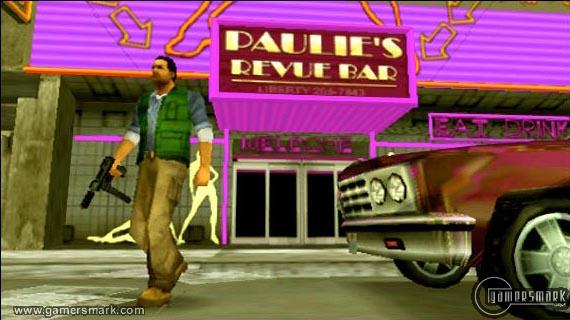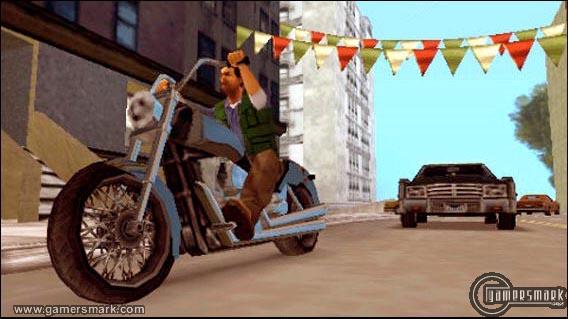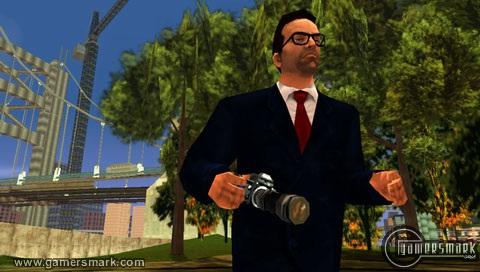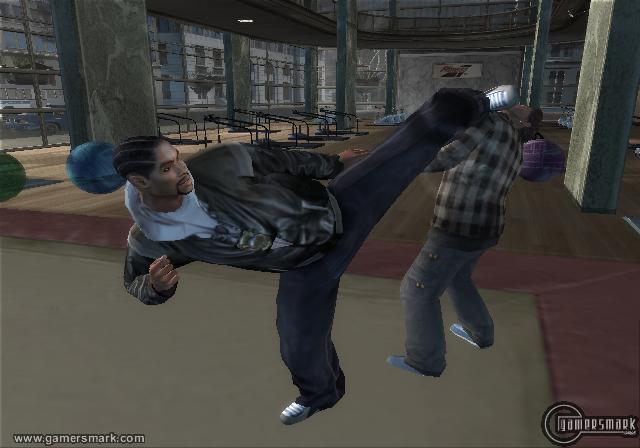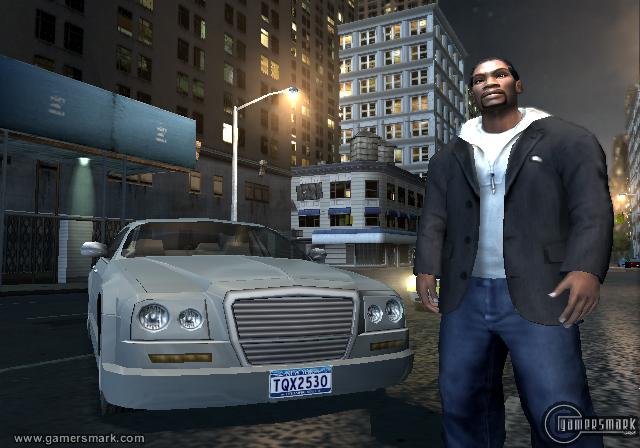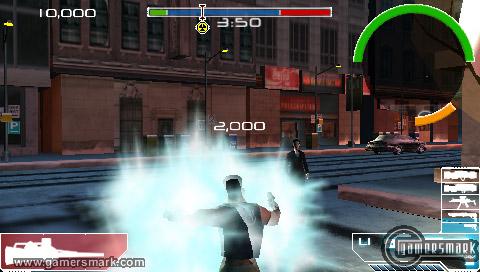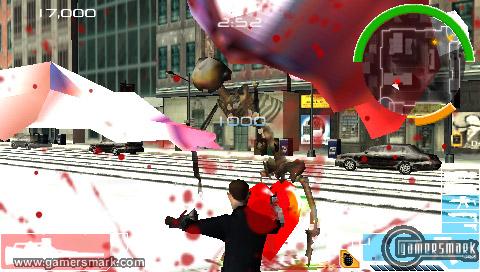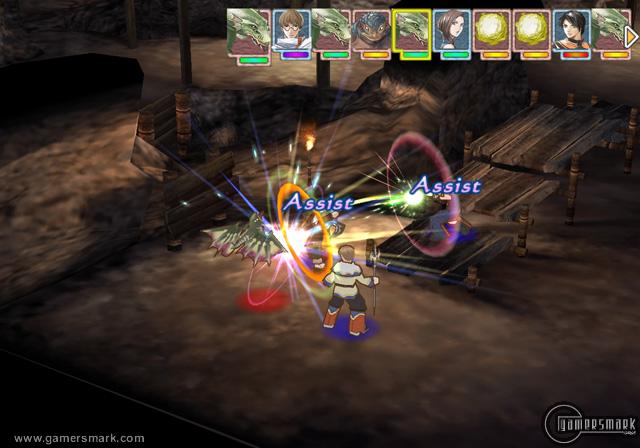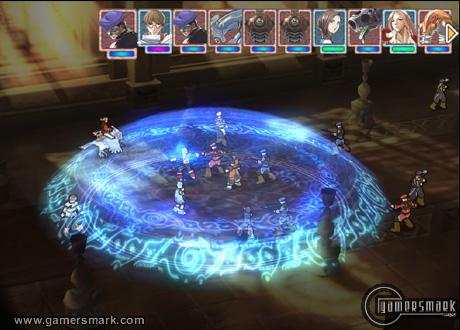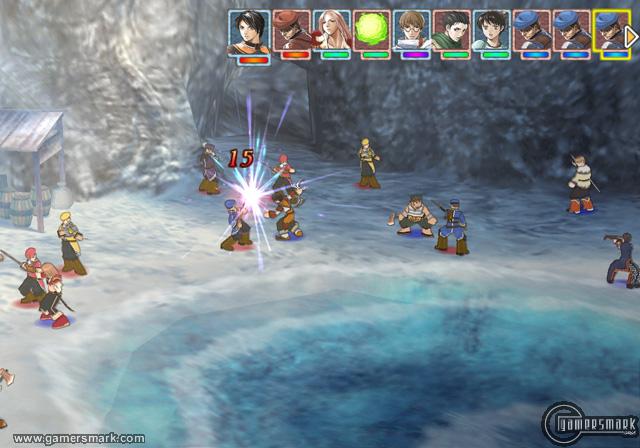| Saturday 12/17/2005 5:11:13pm | |
| Name: | malvito |
| Homepage: | |
| E-Mail: | |
| I like to | i’m an idiot. i advertised my site in this guestbook and then said i didn’t like the site. |
| I like Squackle!: | No |
| Comments: | |
Squackle Guestbook #20688
| Saturday 12/17/2005 11:04:43am | |
| Name: | acri |
| Homepage: | |
| E-Mail: | |
| I like to | this design is SO cool! great job! |
| I like Squackle!: | Yes |
| Comments: | |
Squackle Guestbook #20687
| Friday 12/16/2005 12:59:53am | |
| Name: | tavarnito |
| Homepage: | |
| E-Mail: | |
| I like to | It was a great pleasure for me to visit and enjoy this site. Thanks |
| I like Squackle!: | No |
| Comments: | |
Squackle Guestbook #20686
| Wednesday 12/14/2005 6:47:40pm | |
| Name: | calabria |
| Homepage: | |
| E-Mail: | |
| I like to | this design is SO cool! great job! |
| I like Squackle!: | Yes |
| Comments: | |
Squackle Guestbook #20685
| Wednesday 12/14/2005 6:28:55am | |
| Name: | amaroni |
| Homepage: | |
| E-Mail: | |
| I like to | Geile Seite |
| I like Squackle!: | No |
| Comments: | |
Squackle Guestbook #20684
| Tuesday 12/13/2005 4:57:35pm | |
| Name: | cerenzia |
| Homepage: | |
| E-Mail: | |
| I like to | It was a great pleasure for me to visit and enjoy this site. Thanks |
| I like Squackle!: | No |
| Comments: | |
Squackle Guestbook #20683
| Tuesday 12/13/2005 10:26:15am | |
| Name: | luli |
| Homepage: | |
| E-Mail: | |
| I like to | Hello, I just wanted to say you have a very informative site which really made me think, thanks very much! Have a nice Day!! |
| I like Squackle!: | Yes |
| Comments: | |
Squackle Guestbook #20682
| Thursday 12/08/2005 5:09:54pm | |
| Name: | Lirattop |
| Homepage: | |
| E-Mail: | pottery barn kid |
| I like to | Good work |
| I like Squackle!: | Yes |
| Comments: | Good work |
Grand Theft Auto: Liberty City Stories (PSP) Review
Developer: Rockstar Leeds / Publisher: Rockstar Games || Overall: 9.5/10
Grand Theft Auto has finally made its way to a portable system in pure 3D. Only possible by taking advantage of the Playstation Portable’s technology, Grand Theft Auto: Liberty City Stories is an amazing transition of this generation’s Grand Theft Auto games from console to handheld. Regarded as the first major release on the PSP, Liberty City Stories is a major reason for owning the pricey handheld.
Taking place in Liberty City, the same city as in Grand Theft Auto III, you take the role of Toni Cipriani. For Grand Theft Auto III patrons, you’ll remember Toni Cipriani from nearer to the beginning of the game that had the mom who’d yell through the window during the cutscenes where you would take missions from Toni. Being part of Salvatore Leone’s gang, Toni will visit many familiar places and will see familiar faces that you will instantly recognize from GTA III. But, since Liberty City Stories is a prequel to Grand Theft Auto III, all the events that had actually taken place in Liberty City during GTA III haven’t actually happened yet. As such, certain buildings will be under construction to reflect that Liberty City Stories is a prequel. Not to mention certain people still being alive. However, Liberty City is still intact just as it was played on the Playstation 2, but there are enough changes and shake-ups to the city that will make Liberty City Stories unique.
The most important thing to mention about the game is the controls. Unfortunately for the PSP, it just doesn’t have as many buttons or analog sticks as the Dual Shock controllers do. But the hardware limitations don’t stop the game from having good enough controls to make those limitations almost not be a factor. Almost. There are two pre-set configurations in the Controls menu which will change the functions of the shoulder buttons for car use. SETUP1 will make L the “Look” button, that when pressed you move the analog stick the direction you want to look at while driving, and the R button the hand brake. SETUP2 will give a closer feel to the controls of the console games, making the shoulder buttons look left, right, or behind when both are pressed. There are no differences between the setups for when you’re on foot. There is also the option to change how you control the character – either with the analog stick or the directional buttons. Whatever movement selection is not used for primary movement, it will become less important, yet necessary, controls such as honking the horn, starting a special mission, radio station cycle, weapon cycle, and target cycle. Since the analog stick on the PSP is just about at a perfect sensitivity for moving and driving around, it’s more beneficial to use the directional pad as the other functions. But any way you slice it, the only real problem you might have is when it comes to shooting and targeting with weapons. When you get into instances where there is a requirement for high-speed shooting and targeting action, the PSP’s controls are not as responsive as a Dual Shock controller’s and you may get frustrated having to try something over and over again.
Plenty of the aspects of the Grand Theft Auto games actually work well for the handheld arena. Mostly the Taxi, Ambulance, and Vigilante missions, as well as a few other special non-story missions can easily be initiated and completed within a very short amount of time. Even story missions are finer tuned and shorter to complete. Another big point to the formula is the loading times. The only time you’ll see noticeable loading times are when you first start up the game, move around to other parts of Liberty City (which are the same as Grand Theft Auto III), and right before missions. While it could get annoying when you constantly retry the same mission, the loading times are very acceptable in the end and typically don’t take out a chunk of your playing time. There is also a slight lag between switching radio stations as the audio loads, but nothing too out of the ordinary. As a consequence the UMD will be spinning most of the time, since the data will stream off, resulting in less actual playtime unless you’ve got an outlet nearby.
As for graphics and sound, they’re exactly what is to be expected from the series. Not only that, it is truly amazing how they could pack it all in into such a small package. Compared to GTA III, the game looks to be on the same level, if not better. The cars look realistic, as well as the damage to the cars. Buildings themselves also look exactly how they should be remembered. The most impressive thing about it all is that the actual distance that you can see is a whole lot better than what had been done in almost any other GTA game. You might also notice a little bit of ghosting and frame rate, which is very solid, can drop at points. Radio stations are just as diverse as they were in GTA III, not to mention a couple more were added, along with the ability to play custom tracks off your memory stick. To utilize the custom tracks, however, you have to download a free program to your computer that will convert CDs into a format that the game can read – MP3s can’t be directly used. Voice work is also nothing short of what is to be expected. All the voice actors that played reoccurring characters from the series have reprised their roles, and while it may sound a little tinny at times, there really isn’t anything to complain about in that regard.
Besides a little bit of a shake-up in the control scheme, everything about the game gives the same experience of its console brethren. There’s a great story in a huge city filled with tons of things to do for everyone, even veterans of the series that will spark enjoyment on some level, and you can take it anywhere you want. Grand Theft Auto: Liberty City Stories is by far the best game you can spend your money on at this point in the PSP’s life.
True Crime: New York City (PS2) Review
Developer: Luxoflux / Publisher: Activision || Overall: 8.3/10
In my experience, it has been hard to appreciate any free-roaming style game as much as the Grand Theft Auto series. Since the inception of the formula into many recent games, in practice, games including free-roaming never really compared to Grand Theft Auto’s execution. It’s even more apparent when a game is in an urban setting, such as the True Crime series or other “GTA clones.” True Crime: New York City, the sequel to True Crime: Streets of LA, from Activision and developer Luxoflux, obviously are out to tap into the large fan-base GTA has acquired over the years.
True Crime: New York City has a few things going for it, the most important being the story. Just like what you’d expect from a movie or an episode of a popular crime-drama, you’ve got the set-up: the main character, Marcus, once a gangster, becomes a cop. A detective named Terry, who was a father figure to Marcus, is killed in a mysterious explosion on Terry’s first day of becoming a detective. Not knowing why Terry died, Marcus is motivated to find out why when he is confronted by the FBI asking him to bring in some people and solve some cases to figure out why it happened (and if there is a mole in the police department) on his own with basically no support. The story is delivered very well with a cast of voice actors including Christopher Walken, Laurence Fishburne, and Traci Lords. Being a Christopher Walken fan myself, it makes me happy to have his voice accompanying the story.
True Crime: New York City, quite obviously, takes the approach of you being a cop. As such, when you break the law it goes against you, rather than “for” you, like in a Grand Theft Auto game. Aside from the story, TC: NYC can basically be summed up as a fleshed out Vigilante mode to GTA fans. There is a satisfying aspect of being able to arrest or stop “perps” (as the game calls it) committing crimes. While you could question what good will come out of smacking two people in a domestic dispute (who are beating each other up) with a sledgehammer repeatedly and then arresting them both, the general idea is to beat up whoever is breaking the law. There are lots of different crimes to stop, from hostage situations, drug raids, investigating food poisoning — you get the picture. Most will just end up with you beating the crap out of people though. You can also frisk any person walking around and if you get lucky you’ll find something on them and put them away for whatever illegal item they had on them.
While you’re not cleaning up Manhattan of its lesser-important crimes, you’ll be taking on major cases. Other than finding out why Terry was blown up, there’s an illegal street racing circuit to take down, an illegal fighting syndicate, and several “informants” that will give you particular jobs to do. As a total, there are basically five things to do during the whole game, since exploring the city isn’t exactly as fun as you might think it should be. One thing True Crime: New York City has over the Grand Theft Auto games is in its combat system. TC: NYC’s combat is quite fun – more like beat-em-up-oriented with more than just one button to hit. The only unfortunate part about the combat is that it isn’t as responsive as it should have been; there’s a feeling of being “held back” as it were. Because the controls aren’t as fluid as they feel like they should be, the more and more you play the combat becomes dull.
There are many different types of guns and melee weapons to buy. When you buy a weapon, you basically have can use the gun forever, but can only carry a certain amount of ammunition for the gun. You reload by opening the trunk of one of your personal cars. Unfortunately, you can’t collect weapons you find – you have to buy anything before being able to freely use them, though you can use them until they’re out of ammo. There are also some skills to buy that will enhance your current skills. When it comes to cars, you have to buy the ones you’re able to use from the Police Station as well as at car dealers. Cars in True Crime: New York City hold more value as the police cars you buy will retain the damage that was dealt to them the last time you used the particular car, meaning you’ll have to repair them when they gets shot up or you crash too often into oncoming cars. There are also a number of car skills that you acquire as you progress.
An ethics scale in the game describes your behavior as you play the game. You can either be a bad or good cop. If you take bribes, extort money, or kill people you shouldn’t, you’ll earn Bad Cop Points. If you arrest perps or solve crimes, you’ll earn Good Cop Points. As you collect evidence from different crimes and from searching people, you’ll be able to either turn in your evidence for legitimate pay or sell it at a pawn shop for illicit cash. When you turn in your evidence and gain more career points, you’re paid through a salary that you collect while at the police station.
The graphics in TC: NYC are quite impressive. The game exhibits very nice lighting effects and damage shown on cars is always accurate-looking. Character models are nice; they’re generally what are expected. The graphics are easily the second most important aspect. Sound is quite exceptional as well. Other than the great cast of voice actors, the gun sounds, car sounds, and general atmosphere all comes off well. The things civilians say become redundant after a while, unfortunately. There are also a lot of cuss words tossed around during the whole game, as its M rating surely implies. The police siren (which you use quite a bit) is not nearly as annoying as the one used in a GTA, though, and I prefer it immensely because it doesn’t pierce your eardrums every time it squeals. The soundtrack has a nice selection of songs, and music can be bought at actual music stores through the city. The soundtrack is basically divided into about 60% rap and 40% other styles, the category of “metal/punk” taking the biggest chunk of it. There aren’t any radio stations, but there is a “music player,” which can allow you to listen to all the songs without just hanging onto one radio station playing one style of music.
What racks up against the game is the general interactivity of the city of Manhattan. While you’re able to go into practically any door in the game, most places look exactly the same as another depending on the type of store or establishment it is, meaning a hotel will look exactly like another hotel with barely any changes in what is in the interior. But it’s not like you can really do much when you go inside; it’s only important when you go to solve crimes. Many items in the game are breakable, and can be made into makeshift weapons if you just so happen to be able to break something.
Do I like True Crime: New York City? The answer would be an emphatic yes – but I would take any GTA over it. I truly didn’t expect it to be that great originally, but the game is a nice diversion in between releases of Rockstar’s flagship franchise, providing for a nice bit of fun to free-roaming game enthusiasts. While it may not be perfect right now, the True Crime series holds potential to become an absolute must-buy in a future incarnation. Its second outing, however, falls a bit short of that status.
Squackle Guestbook #20681
| Sunday 12/04/2005 2:00:14pm | |
| Name: | Lirattop |
| Homepage: | http://acne-product.atspace.com |
| E-Mail: | litaro@hormailc.com |
| I like to | Good work |
| I like Squackle!: | Yes |
| Comments: | Good work |
Squackle Guestbook #20680
| Friday 12/02/2005 4:37:06pm | |
| Name: | Lirattop |
| Homepage: | |
| E-Mail: | litaro@hormailc.com |
| I like to | |
| I like Squackle!: | Yes |
| Comments: | Good work |
The Controversy of Video Games in Modern America
In recent years, controversy in video games has heightened to unprecedented levels. Every once in a while, a gigantic outburst is made in regards to controversial content matter in a video game. With increasing realism being worked into video games, they have matured into a viable mainstream media comparable to movies and television. However, just like its longer-existing counterparts, video games have hit their proverbial puberty – major scrutiny and an attempt to squelch its expression of speech. Certain groups aim to control the industry through laws and sales restrictions, citing that children could get their hands on mature-rated games.
One of the first truly controversial games came in 1983 in the form of Custer’s Revenge for the Atari 2600, a home gaming console. Custer’s Revenge depicted General George Armstrong Custer raping a Native American woman tied to a fence post. The amazing irony of the controversy was that the graphics for the game were so bad that it was barely distinguishable what was going on. However, activist groups like the National Organization for Women (NOW) and the American Indian Community House still made an outcry against the game. Not knowing who to point the blame on, the activist groups blamed Atari, the maker of the console, instead of the developer named Mystique. After the controversy had blown over, Mystique went on to develop other “X-rated” games that didn’t garner the same amount of attention as Custer’s Revenge had.
Criticism against video games declined when more sophisticated video game consoles came to market. Nintendo, a very and still popular video game console maker, brought about a licensing system that required games to pass their various tests of blood, nudity, and other such themes to ensure the moral quality of the games released under their license. The Nintendo “Seal of Quality” was featured on games approved and released on the Nintendo Entertainment System (NES). The licensing system did its part to establish some sort of barrier against any bad publicity for a game with controversial content matter.
In 1992, a game called Mortal Kombat attracted activist groups for its simulated violence and exaggerated amounts of blood. Though fighting games were not uncommon during the time, it was the first to use animated pictures of real people, making it more realistic than others during the time. Senator Joe Lieberman had even spoken out against the game during a Senate investigation into video game violence. Mortal Kombat is usually credited with being the vehicle for the establishment of the Entertainment Software Rating Board (ESRB), which is now the governing rating body of the video game industry. The ESRB uses an age-based system, similar to the MPAA’s certification for movies.
The ESRB has become the video game industry’s self-governing body that approves games and slaps certain ratings on a game to show its appropriateness. By use of five different ratings and 32 descriptors, the ESRB aims at giving the buyer a good idea of what to expect in the title. Titles rated eC for Early Childhood have content for children ages three and older. A rating of “E” for “Everyone” has content that is suitable for people six and older; the equivalent of a rated “G” movie. A rating of “T” for “Teen” has content that is suitable for people ages thirteen and older; the equivalent of a rated “PG-13” movie. A rating of M for “Mature” has content suitable for people aged seventeen and older usually containing intense violence or sexual content; the equivalent of a rated “R” movie. For titles that are basically on the level of pornography, a rating of “AO” for “Adults Only” is given. The AO rating is the highest rating to be given, and a very limited amount of games have ever actually been given the damnable rating. AO games are not carried at major retailers and you would be hard pressed to even find an AO game other than ordering it online. The reason behind this is because the major retailers agreed together through an organization called the Interactive Entertainment Merchants Association (IEMA) that they would not sell games that were rated AO as to avoid the game from falling into the hands of children, similar to how porn is not usually sold at major retailers. The ESRB’s rating system has become the prevalent and only rating system widely accepted for video games in America. Other countries deal with their rating in different ways, some just having the same rating body as movies and music rate video games as well.
Ratings can themselves be seen as a way to advertise a certain product. A game aimed at children will want to have the E rating, being apparent that it is more family-friendly. A game that is rated M is advertised as a game that for older people, and has suggestive themes not found in a lesser rated game – it appeals to people because mature themes like violence and sex make people interested. Many of the wildly popular games to have been released recently have had an M rating and are perceived as ultra-violent. One of the most popular M-rated game series is a series named Grand Theft Auto (GTA). Starting life as a two-dimensional top-down game on the Sony PlayStation with GTA and GTA 2, it wouldn’t be until Grand Theft Auto III that the series really made an impact on the way video games were perceived.
Grand Theft Auto III was the first game to show the world that video games weren’t for kids anymore. While there had been other Mature rated games in the past, they generally flew under the radar because they just didn’t sell an amazing amount of copies to warrant the attention. To date, the Grand Theft Auto series has sold around fifteen million copies. Grand Theft Auto III was the first game of the series to be in full 3D, being a nearly realistic rendition of a boundless world where you could do as you please. The most common stereotypical summary of what is said to be done in a Grand Theft Auto game is that you murder, steal, and destroy anything you want to, healing by having sex with prostitutes which afterward you can beat them to death and take their money to recover the funds spent on them. And if it were any more of a consolation, it is also described in a way that players are allowed to wreak as much havoc as they like without progressing through the game’s storyline, as if it would be more acceptable to those stereotyping it if you progressed through the story while wreaking havoc. However, the description of the game picks at parts of the game that are the most miniscule of the game’s features, such as sleeping with a prostitute to heal (which should really be taken as more of a joke than anything). A player could go through a whole game without ever picking up a prostitute to heal, and the description avoids the aspect of the game in which you choose to actually do things in the game, or even play the game to begin with. At the end of the day, nothing included in Grand Theft Auto III was any worse than a rated R movie.
The newly found controversy that came with the Grand Theft Auto III subsided, as its sequel Grand Theft Auto: Vice City flew relatively low under the radar. The megaton bomb that would set in motion legislative action against the industry would come in the “Hot Coffee” scandal of Grand Theft Auto: San Andreas. Hidden on the disc packaged with the full version of the game, a mini-game in which you could have sex with your in-game girlfriend interactively was discovered. Not intended to be a part of the final game, the only way to actually access the mini-game is through the long, arduous process of wooing your girlfriend into liking you enough to invite you in for some hot coffee. In the normal version of the game, all that would be shown is a wide shot of the house and some moaning, but if a hack was employed (which had to be intentionally found, downloaded, and applied), the scene would be replaced by the sex mini-game. Since the mini-game was actually on the disc and the game was rated M as by the ESRB, the ESRB’s own credibility came into question — especially about their rating procedures. The ESRB, under political pressure no doubt, re-rated the game as AO, effectively banning it from major retailers. Whether or not the ESRB was right in overruling their own rating and not standing by their ratings, they showed that as long as there was enough controversy about certain aspects of a game they could possibly force the ESRB to re-rate other games. Had the “Hot Coffee” mini-game actually been included in the main game itself, instead of being hidden, there would have not been as huge of a controversy. Whether or not the whole thing was a publicity stunt, awareness of the game Grand Theft Auto: San Andreas very much hit the mainstream and sent the message that games aren’t for kids anymore.
Proponents of legislation restricting the sale of games with controversial matter cite that they want to protect the children from getting their hands on particular games, and make it the retailer’s responsibility to make sure it doesn’t happen. Legislation has been passed in many states already, but is being challenged by the video game industry on the basis of the laws restricting First Amendment rights. Lawmakers who vote for these types of sales-restriction laws want parents to be involved in the purchase of the games, by saying what games kids can or cannot buy. The lawmakers want to protect children because they feel that it propagates violence in young children, such as school-shootings and murders.
Opponents of legislation, such as most of the video game industry, view any sort of sales-restricting laws as going against their First Amendment rights of free speech. They view it as unfair, as well, since the music and movie industries (pornography aside) do not have any laws in place to sanction sales of product. If sales-restricting laws become more common, video game publishers will be forced to self-censor themselves to sell their games to the largest audience possible, similar to how the movie industry will commonly release a seemingly should-be-rated-R movie as PG-13 to get the largest audience possible.
It isn’t surprising that there is controversy over video games. Video games are not accepted in the mainstream as a serious form of media, and are often seen as a toy rather than a viable form of entertainment. Video games have hit its boom, with sales being higher and higher every year. Analysts predict that the video game industry will eventually make as much as the movie industry and political figures aim to get easy brownie points with their constituents while video game companies continually push the envelope on their end. Whether or not the legislative actions being taken during video games’ early days affect the full maturity of the media remains to be seen.
–
References
Anderson, Craig A. April 2000. Journal of Personality and Social Psychology, Vol. 78(4), pp. 772-790.
Gonzalez, Lauren. Gamespot.com. 2005 November 13. “When Two Tribes Go to War: A History of Video Game Controversy.”
Wikipedia. 2005 November 13. “Video Game Controversy”
http://en.wikipedia.org/w/index.php?title=Video_game_controversy&oldid=27936616
Infected (PSP) Review
Developer: Project Moon Studios / Publisher: Majesco || Overall: 8.5/10
Just in time for the holidays, Infected is the right game to spend your free time with. Instead of killing your zombie-like family members, you can kill computerized zombies on your PSP in the corner of Aunt Suzy’s house with no one ever being the wiser. If your Aunt Suzy happens to be tech savvy, you can take your zombie shooting obsession online with the PSP’s wi-fi capabilities. Just be careful, because the PSP screen is so big it might attract the zombies of your real life — your family members.
The story of the single-player mode in Infected is very simple. A disease breaks out that turns people into mindless zombies, and they start causing lots and lots of problems. Like eating and infecting people. It’s basically run-of-the-mill when it comes to that much. Before each new mission, you’ll get a dose of humor in one way or another – either through voice-only briefing or an actual cutscene. After the preliminary story material, you proceed to select and finish the next mission.
In Infected, you shoot zombies, and as if that isn’t obvious enough, with weapons. As you upgrade your weaponry through the Upgrades screen, you’re able to use more powerful weapons and power-ups. Every time you start you’ll begin with the least powerful weapon, the Pistol. As you kill more and more zombies, you’ll build up your Ballistic weapon gauge, and as it fills up more and more you’ll work your way up to a shotgun, machine gun, and two types of rocket launchers.
In the single-player mode, there are different kinds of objectified missions. They range from evacuation of citizens, defending a certain target, simply eradicating all of the zombies in sight, or a combination of types of objectives to make a mission harder and more complex. The concepts of the objectives are very easy to learn and understand through straightforward tips given. Because the single player mode is not story driven, the motivation to play the game comes from the gameplay itself. The game is easy to learn, but to master it you’ll need to learn how to use the controls almost by reflex to get further in the game. Luckily for those who require a little more or little less challenge, you can change the difficulty between missions with no penalty. Infected is a fun game, and when it starts getting less than that, you can fix it. There are quite a few single-player missions to go through, but they won’t take too much time to complete. There is also a ranking of how well you do a particular mission, so you can go back and get that gold medal in the mission you originally got a silver or bronze on.
Multiplayer is a fairly important aspect of the game. While it isn’t as technically immersive as the single-player mode, multiplayer does arise some interesting concepts. Other than just combating against other enemies in deathmatches, when you beat an opponent, you will infect them with a “virus” named after you. By infecting your opponent with your virus, you can spread it around farther and around the world; when a player gets infected by a virus, to clear that virus they must either defeat three other people in multiplayer or three tagged single-player missions. By defeating other opponents in multiplayer, they spread your virus to the other players, and the process repeats. But if you play the tagged (called “infected”) levels in single-player mode to replay, you can stop another person’s virus from getting spread farther. It brings up a new kind of massive competition, and if you really got into it, you could work up to the point of having your virus the most infected. To keep track of these stats, Infected uses the PSP’s web browser to check all the stats corresponding with your stats and also the overall trends through all the copies of Infected spread through the world. It’s definitely a cool thing to see a game use the PSP’s web browser and have this kind of interactivity level for a game. Not to mention it doesn’t cost anything extra for it.
As for graphics and sound, the graphics are pretty cool. The textures shown in the game could have been a little less bland, but they’re tolerable. Between shooting zombie mall Santas and the like, it’s not going to matter as much. Cutscenes are nicely animated and generally well-made. As for sound, the voice acting included in the game isn’t bad at all. Sound effects are awesome since there’s lot of explosions and guns shooting. The best part hands down is the soundtrack. Full of hard rock and death metal (if that’s what they can be called) songs, a large selection of which are composed by Slipknot, it genuinely creates an overall feeling that is needed in an M-rated zombie-shooting game. It might not float many people’s boats, but if you’re like the music that is on Slipknots latest album, Vol. 3: The Subliminal Verses, you’ll dig the other few songs by other groups in the game as well. In total, there are 22 songs and all can be turned on or off in the options screen.
Your character’s appearance is a fun aspect of the game. You can basically create your own character or unlock different “avatars” by buying them or finding them through the game. Other than being able to make anyone from a goofy lookin’ nerd to a person who looks like he could be in a Good Charlotte-Green Day band, you can play as all the members of Slipknot! What fan would pass up the opportunity to go around shooting a bazooka with Corey Taylor?
Where Infected really does suffer is in its controls. While it can be considered part of the challenge of the game to get used to the controls, the game really would have benefited from a second analog stick. It’s just an unfortunate fact that camera angles and control hold the title back from being better. As a consequence, the controls in general aren’t very sympathetic to your inability to adjust the camera, especially since the view is locked to being right behind your character showing the waist up.
If there’s one thing to say about Infected, it’s that there’s definitely fun to be had with it. While on its own, it isn’t a console-selling “killer-app,” Infected does bring out a concept or two to show what is possible with the PSP. Infected shouldn’t be overlooked — it’s a fresh experience, filled with humor that will make you either burst out laughing or cringe in embarrassment.
Suikoden Tactics (PS2) Review
Developer/Publisher: Konami || Overall: 8.9/10
Konami’s Suikoden RPG series has finally gotten its own strategy RPG offshoot, in the form of Suikoden Tactics for the Playstation 2. Rather than comparing Suikoden Tactics to widely known staples of the genre, it would be more appropriate to compare it to another recently released strategy RPG — Stella Deus: The Gate of Eternity, from Atlus. If you’re in the market for a new strategy RPG, Suikoden Tactics would be an excellent choice, even on its own merits.
Suikoden Tactics takes a while to set up the story; it takes nearly two hours before you can really start to catch on to what might (or might not) be happening. From what you might be able to gather from the first couple hours (as to not spoil anything later on) is that the story has something to do with a band of travelers trying to find information about Rune Cannons, the main character being named Kyril. The traveler’s interests in Rune Cannons are not explained, but during their search they stumble upon, presumably, a Rune Cannon that changes people into fish-human hybrids. However, the origins of the protagonists and their interests in Rune Cannons becomes a subplot (or takes a backseat, rather) to events and conspiracies revolving around Rune Cannons in general. Even more puzzling is the weird goat girl that never says anything and doesn’t partake in battles, but follows the main character wherever he goes. The beginning stages of the story are fragmented, and take place over a number of in-game years, however, its not all that complicated. The most important point about the story is its ability to keep the interest in playing the game.
Suikoden Tactics takes all that has made strategy RPGs great in the past, and rolled it up into a neat, polished package. Not only that, but it adds on a level of complexity (in the form of elements), forcing you to be more tactical in your approach to each battle. In regards to controls, Suikoden Tactics uses the tried and true command-menu. Unfortunately, after experiencing the “Direct” control scheme implemented in Stella Deus: The Gate of Eternity, which sped up battles considerably by making buttons shortcuts to individual commands that would normally be on the command-menu, it makes it seem like Suikoden Tactics is lacking in that department. However, Suikoden Tactics is considerably more complex, and there are aspects of the game that make battles go faster, so it evens out the playing feel in that regard.
As said before, the usual features in a strategy RPG are present. There are the side quests in which you can send a party member to accomplish, side quests that you can actually participate in, the building and maintaining of an army of personality-less allies, and other bits and pieces. But it is the unique aspects of Suikoden Tactics that make the game shine, namely the elements. Elements are your usual magical properties in any RPG like Fire, Earth, Lightning, Water, etc. Each element has its own opposite, no surprises here. Where it gets more complex is that each character has an “affinity” to a certain element. So if a character had a Fire affinity, and they were standing in a square that had the elemental property of Fire, they would get “powered-up” – attack and defense are noticeably higher as well as the prospect of healing after every turn while in the friendly elemental field. Keeping that in mind, it becomes wise to try standing in friendly elemental areas, avoid opposites to your affinity, and manipulate the battlefield to your advantage. Enemies are also able to use elementals in the same way. Besides the elementals, there are other nifty aspects such as switching out party members for fresh troops (allowing you to exploit your whole army in a battle if need be), and mounting party members on animals you find along the way. There are also a number of battle skills that characters can learn that allow you to customize each of them in a way that will be optimal.
There are parts of the battle system that give leeway to speeding up each battle, as well as stepping out of the norm of regular strategy RPGs. There is no use of Action Points, normally seen in strategy RPGs, to dictate each character’s turn. They basically get to move and then act, but if they act before they move, they aren’t allowed to move again (unless they have the specific battle skill to do so). There are also no Magic Points, as the special skills and magic are lumped into a category called Runes; you can use a specific Rune skill a limited amount of times in each battle and the number you’re allowed to use them increases as you level up. If you equip the battle skill on a character to do so, a character can attack more than once during his or her action, speeding up the battle quite a bit compared to what it could be if the battle skill weren’t equipped.
The town and back-end systems aren’t too out of the ordinary. There are five different places in a town that are of interest: the Outfitter, the Blacksmith, the Quest Guild, the Rune Master, and in certain areas a training ground. The Outfitter is the place to buy your equipment and items; armor and hand gear being the most important, they can affect the status of a character. There are also about ten extra slots for each character to hold items or extra equipment as you so desire. At the Blacksmith, you simply upgrade the weapon each character has (there’s no weapon-choosing here, it’s just straightforward upgrading). The Rune Master is the place to go for your special skill and magic needs. When you acquire an orb you have to pay a Rune Master to equip or unequip the Rune Orb. There is also a training ground of sorts every so often where you are able to level up and find treasure. Oddly enough, a permanent death situation is presented in the training levels of the game, while not integrated into the story battles. So, what it basically means is you shouldn’t push the capabilities of your group so far as to have someone in your party die, making them not playable anymore.
Sound and graphics do take a place in the fold as well. Most notable for the sound portion of the game, the voice acting is either a hit or a miss. Many might not like the choice of voice work for the main character, because he comes off as a young adult with the voice of a ten year old, but any fan of the .hack series will recognize Kyril’s voice as Kite’s. You’ll probably be more able to accept the voice of Kyril if you played through the .hack games, like I have. Other voice work is moderate at best, sometimes falling lower than that. Graphics-wise, the game is modest at best. The characters are cel-shaded, and scenery isn’t that striking either. The entire story takes place with in-game animation; CG movies will be admittedly hard to come by, if there are any to speak of. However, we should probably be grateful they took the time to have in-game animations rather than still pictures talking back and forth a la Stella Deus: Gate of Eternity.
As for what is disappointing about the game, it mostly comes in its overall package. While yes, Suikoden Tactics is very recommendable for a strategy RPG, it doesn’t have that extra “oomph” to push it over the edge and make it one of those games you’ll cherish forever. If there were a better story (and to a lesser extent a stronger overall voice cast), the end product would have been better balanced between it and gameplay. Nevertheless, Suikoden Tactics is a refreshing experience for the strategy RPG fan.

